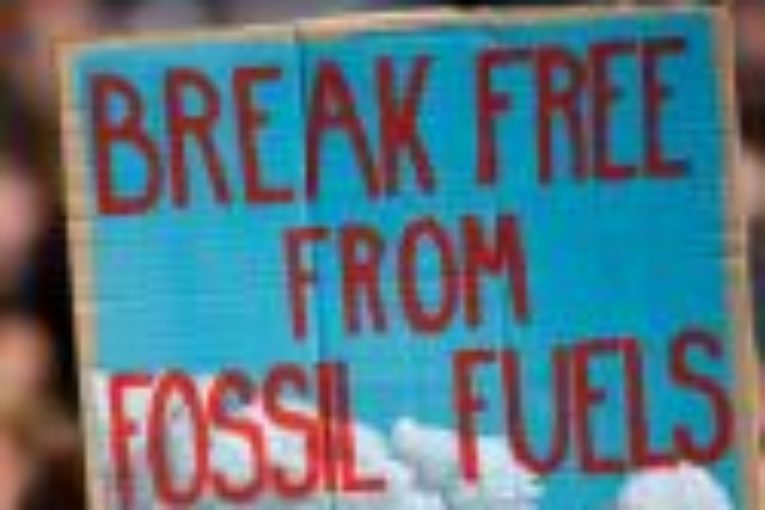
It’s time to close the spreadsheets and think differently about the world of energy.
A couple of weeks ago, the International Energy Agency (IEA) released their 176-page report titled, World Energy Investment 2019. I will spare you the read and take you to a quote, buried on page 30 that pretty much sums up what most analysts in the business already know: “Energy investment is misaligned with where the world appears to be heading…”
Energy investment is misaligned with where the world appears to be heading
IEA
The gap between what we perceive, what we aspire to, and what is reality is already wider than the Pacific Ocean. And it’s getting wider. I look at all the numbers, read all the reports — including the IEA’s most recent — and the reality is clear: Investment into renewables has plateaued at best; energy efficiency is treading water; and the proportion of primary energy sources in the world mix — coal, oil, natural gas, nuclear power, hydro and renewables — is barely changing.
Despite all the fire alarms to decarbonize and use less energy, investment dollars into these objectives hasn’t budged much in a decade.
Having said that, the capacity of solar and wind power is still growing, because their costs are falling. A dollar of spending installs more renewable energy today, about 55 per cent more, than it did in 2010. Even so, that’s nowhere near enough to facilitate a “transition” away from fossil fuels, because the world’s insatiable hunger for energy is wanting for everything.
In fact, industrializing regions of the world are so demanding for all sources of energy that even the “approvals of conventional oil and gas projects fall short of what would be needed to meet continued robust demand growth,” says the IEA.
Spending on the infrastructure for delivering electricity is also way behind, some 35 per cent less than what’s needed to achieve sustainable development goals like those in the Paris Agreement. Looking outside our bubble of western hubris, most regions of the world are a long way from being able to displace barrels and pipelines with wires and electrons.
All this says that the probability of achieving any aspirational target over the next decade or two is nil. Social attitudes, economic conditions and investor incentives are not strong enough to force expedient change.
There is no shortage of institutions like the IEA that proffer scenarios that quickly lower the drapes on fossil fuels. A typical, hypothetical energy transition fills 45 per cent of our 2040 energy needs with a combination of renewables and efficiency gains.
That aspiration is laudable until the realization sets in that the thin green wedge of renewables between the year 2005 and today, barely noticeable on the stack, has cost US$4.1 trillion. For that expenditure there has been no meaningful dent in the market share of the fossil fuels. No wonder the IEA concludes that investment is “far out of step with where it needs to go.”
Back-of-the-envelope math suggests that renewable energy costs must halve again, and real-dollar spending on them must double to at least US$600 billion per year to achieve such a transition. But that does not include hundreds of more billions needed every year to arrest consumption growth and build out infrastructure for electrification.
Nor does the spending gap address the biggest elephant in the room: the costs of prematurely retiring entrenched fossil fuel systems and the social costs of occupational change (i.e. putting workers on the street). The latter is a nagging matter that is too often trivialized.
Every day we see countless headlines trumpeting spectacular growth in renewable energy, electric cars and other Jetsonia. It’s all exciting, but also deceiving.
Too much exuberance is a form of negative denial that leads us to myopic perceptions of change. Without massive investment, all the overzealous talk about energy transition is akin to throwing a rock in the ocean and thinking a tsunami is on the way.
In a tone of resignation, the IEA offers us a punchline: “Current market and policy signals are not incentivizing the major reallocation of capital to low-carbon power and efficiency…”
The bluntest translation of this statement is that governments, investors and corporations are not spending enough money to put the global fossil fuel business out of business. It’s not likely that enough will ever be spent to realize on that difficult strategy. Yet, is the objective to put multi-trillion-dollar industries out of business or reduce emissions?
More than anything the IEA’s recent report, and many other ones with similar refrain, point to unrealistic expectations that are not being met. So, maybe the discussion of pointing out how much money is not being spent should shift to thinking differently about what the money should be spent on.
Peter Tertzakian is the Executive Director of the ARC Energy Research Institute. Peter provides analysis on technology and energy-related businesses, and is also the bestselling author of A Thousand Barrels a Second and The End of Energy Obesity.
You can read more of the news on source
